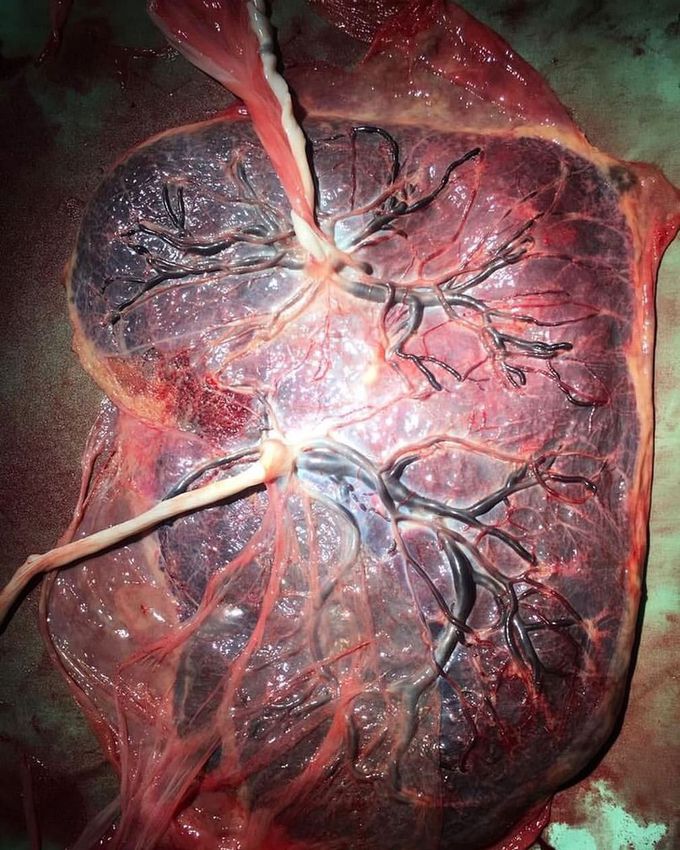


The fetal surface of a normal term identical Monochorionic twin placenta is seen here
Monoamniotic twins are identical twins that share the same amniotic sac within the uterus. They are always identical, always monochorionic and are usually termed Monoamniotic-Monochorionic (MoMo) twins. They also share the placenta, but have two separate umbilical cords. In such pregnancies, cord entanglement, malformations, twin-to-twin transfusion syndrome and prematurity are possible complications. Cord entanglement occurs due to close proximity and absence of amniotic membrane separating the two umbilical cords makes it particularly easy for the twins to become entangled in each other’s cords, hindering fetal movement and development. Additionally, One twin may compress the other’s umbilical cord, potentially stopping the flow of nutrients and blood and resulting in fetal death. Twin-twin transfusion syndrome occurs when one twin receives the majority of the nourishment, causing the other twin to become undernourished. Against all odd, the survival rates is still as high as 95% with aggressive fetal monitoring using frequent ultrasound exams, non-stress test, and biophysical profile.
Hemodynamic stimuli&nonhemodynamic stimuliEffects of sugar on teeth

